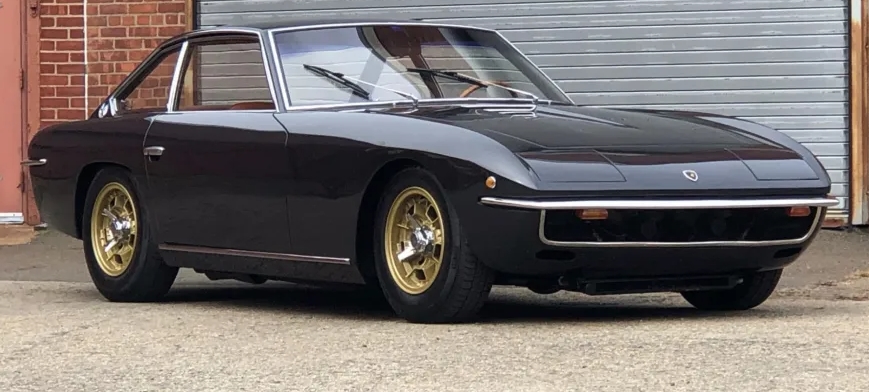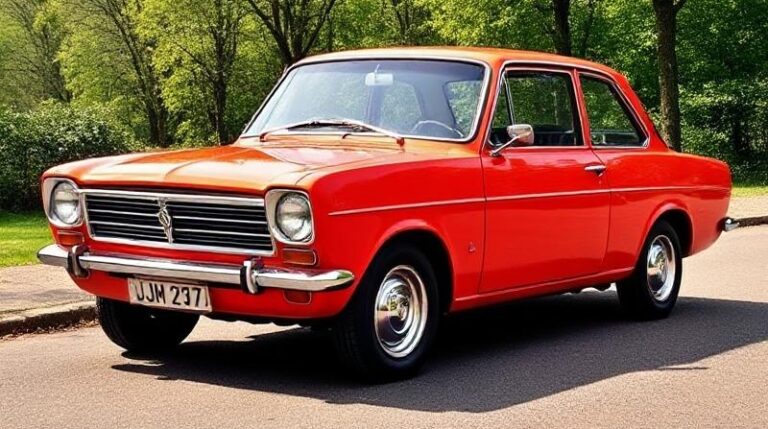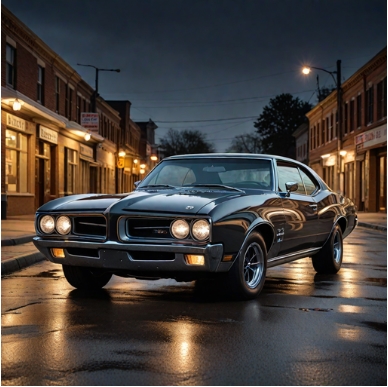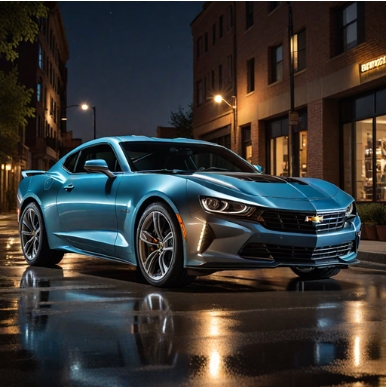The Gentleman’s Bull: The Subtle Evolution of the Lamborghini Islero
In the annals of Lamborghini, a marque defined by audacious design and earth-shattering performance, some models inevitably roar louder than others. The world remembers the revolutionary Miura and the era-defining Countach. Yet, nestled between these titans is a car of profound importance and subtle charm, a grand tourer that perhaps best embodied the personal vision of the company’s founder, Ferruccio Lamborghini. This car was the Islero, a machine of brutal elegance that evolved thoughtfully over a brief but significant production run. A connoisseur’s choice, the Islero was not just another model; for a time, it was Ferruccio’s personal car, the ultimate endorsement from the man who started it all.
The Context: A Necessary Successor
To understand the Islero, one must first look at the car it replaced. By 1967, Lamborghini had firmly established itself as a premier manufacturer of high-performance GT cars with the 350 GT and its successor, the 400 GT 2+2. These cars, with bodies penned by Carrozzeria Touring Superleggera, were beautiful, fast, and sophisticated. However, disaster struck when Touring, one of Italy’s most celebrated coachbuilders, declared bankruptcy in late 1966. This left Lamborghini without a body supplier for its flagship front-engined GT.
A temporary solution was found by contracting Carrozzeria Marazzi, a firm established by Mario Marazzi, a former Touring employee, along with other seasoned craftsmen from the defunct company. Marazzi was tasked with evolving the 400 GT’s design into a new model that was both fresh and producible within their means. The result, unveiled at the 1968 Geneva Motor Show, was the Lamborghini Islero GT.
The name, in keeping with Lamborghini tradition, was drawn from the world of bullfighting. Islero was a formidable Miura bull who, on August 28, 1947, fatally gored the legendary matador Manolete. The name hinted at a quiet, deadly seriousness, a perfect metaphor for a car designed to be less flamboyant than the Miura but every bit as potent.
The First Generation: The Islero GT (1968–1969)
Production Years: 1968 – 1969 Models/Trim Levels: Islero GT Units Produced: 125
The Islero that debuted in 1968 was a study in muscular restraint. While its chassis was a direct development of the 400 GT, featuring the same wheelbase, its body was entirely new. Penned by Mario Marazzi, the design was clean, sober, and purposeful. It eschewed the soft, rounded curves of its Touring-bodied predecessor for a crisper, more angular aesthetic that was very much of its time.
The front was dominated by a wide, simple grille and distinctive quad pop-up headlamps, which gave the car a sleek, low-slung profile when closed. A long bonnet hinted at the power beneath, while the cabin, or “greenhouse,” was airy with thin pillars, offering excellent visibility. The car’s track was widened compared to the 400 GT, giving it a more planted, aggressive stance without resorting to overt wings or scoops. It was handsome and athletic rather than overtly beautiful, projecting an image of confident power.
Under the bonnet lay the heart of all classic Lamborghinis: the glorious 3.9-liter (3929cc) DOHC V12 engine, designed by Giotto Bizzarrini. In the initial Islero GT, it was fed by six twin-barrel Weber 40 DCOE carburetors and produced a formidable 325 horsepower at 6,500 rpm. This power was sent to the rear wheels through Lamborghini’s own robust five-speed manual transmission. The mechanical specification was purebred GT: fully independent suspension with double wishbones and coil springs at all four corners, and massive Girling ventilated disc brakes to haul the 1,315 kg car down from its impressive 154 mph (248 km/h) top speed.
The interior was designed for high-speed, long-distance touring. It was a 2+2 configuration, though the rear seats were, in typical fashion for the era, suitable only for small children or luggage. The cabin was trimmed in leather, with a full complement of Jaeger instruments set into a simple, functional dashboard. However, early reviews and customer feedback noted some ergonomic quirks and a build quality that, while good, wasn’t quite at the level of its chief rival from Maranello. Soundproofing was minimal, and creature comforts like air conditioning were optional extras.
Despite these minor criticisms, the Islero GT was a superb driver’s car. Its wider track made it more stable and predictable than the 400 GT, and the potent V12 provided effortless acceleration. It was the quintessential “gentleman’s express”—a car for covering continents at incredible speed without attracting the kind of attention a Miura would. For 13 months, Lamborghini produced 125 examples of this pure, original vision.
The Evolution: The Islero S (1969–1970)
Production Years: 1969 – 1970 Models/Trim Levels: Islero S (also known as Islero GTS) Units Produced: 100
Ferruccio Lamborghini was a man who listened intently to his customers and his engineers. He knew the Islero was a fundamentally excellent car but that it could be perfected. For the 1969 model year, the company introduced a significantly updated version, a model that addressed virtually every critique of the original while adding a welcome dose of extra performance. This was the Islero S.
The “S” stood for Spinto, Italian for “pushed” or “driven,” signifying its enhanced capabilities. The evolution from GT to S was a perfect example of targeted, intelligent refinement.
Exterior Refinements: Visually, the Islero S was subtly but noticeably more aggressive. The most prominent change was the addition of gently flared wheel arches, needed to accommodate the car’s slightly wider track and give it a more muscular look. On the front fenders, a pair of non-functional circular vents on the GT were replaced by a single, large, functional slatted vent to better extract heat from the engine bay. A minor but telling detail was the removal of the fixed front quarter-light windows in favor of a single piece of door glass, cleaning up the car’s side profile. The standard wheels remained the beautiful Campagnolo magnesium alloys, though they were often shod with wider Pirelli Cinturato tyres.
Interior Transformation: The most significant upgrades occurred inside the cabin. The Islero S received a completely redesigned interior that transformed it into a far more luxurious and user-friendly grand tourer. The simple, flat dashboard of the GT was replaced with a more modern, driver-focused binnacle. The center console was reconfigured for better ergonomics, and the toggle switches were replaced with more conventional rocker switches. The seats were redesigned to offer better support for spirited driving, and legroom for the driver was improved. Crucially, soundproofing was substantially increased, and features like a heated rear window and air conditioning became more common, solidifying its credentials as a comfortable long-distance machine.
Performance Enhancement: The heart of the Islero S was its upgraded V12 engine. While retaining the same 3.9-liter displacement, engineers applied lessons learned from the more powerful Miura S. The compression ratio was raised from 9.5:1 to 10.8:1, and the engine was fitted with the hotter camshaft profiles from the Miura S. This tuning unleashed an additional 25 horsepower, bringing the total output to 350 horsepower at 7,500 rpm.
This increase in power, while seemingly modest, had a palpable effect on performance. The Islero S could now reach a top speed of 161 mph (259 km/h) and sprint from 0-60 mph in the low six-second range, making it one of the fastest front-engined cars in the world. The chassis and brakes were carried over, as they were already more than capable of handling the extra power.
The Islero S was the car the Islero was always meant to be: ferociously fast, comfortable, impeccably built, and discretely styled. It was this refined model, chassis #6435, that Ferruccio Lamborghini famously chose as his personal daily driver, using it to commute to the factory and for business trips. He loved it for its blend of immense capability and understated presence—a car that could outperform almost anything on the autostrada without shouting about it.
.
You’ve got that cool car, but is it resting in its own cool place?
It’s visually pleasing for the surrounding areas outside of your home to look as awesome as what’s stored inside your garage! If you desire a truly inspirational environment, you should check into these plans!

.
The End of the Line and Lasting Legacy
Production of the Islero S ceased in April of 1970 after exactly 100 examples were built, bringing the total production run of the Islero to just 225 cars. It was replaced by the Jarama, a more aggressively styled 2+2 penned by Marcello Gandini at Bertone. The Jarama marked a shift towards the harder-edged, wedge-like design language that would define Lamborghini for the next two decades, making the Islero the last of the truly classical, soberly styled front-engined V12 GTs from the company.
Today, the Lamborghini Islero remains one of the most underrated and sought-after models among marque connoisseurs. Its rarity, combined with its direct link to Ferruccio himself, gives it a unique historical significance. Its evolution from the capable GT to the perfected S model showcases Lamborghini’s early commitment to constant improvement. It stands as a testament to a time when the ultimate expression of performance was not a mid-engined supercar, but a powerful, elegant grand tourer built to cross countries with speed, style, and absolute confidence. The Islero was, and remains, the thinking man’s Lamborghini—the quiet bull with the deadliest charge.







